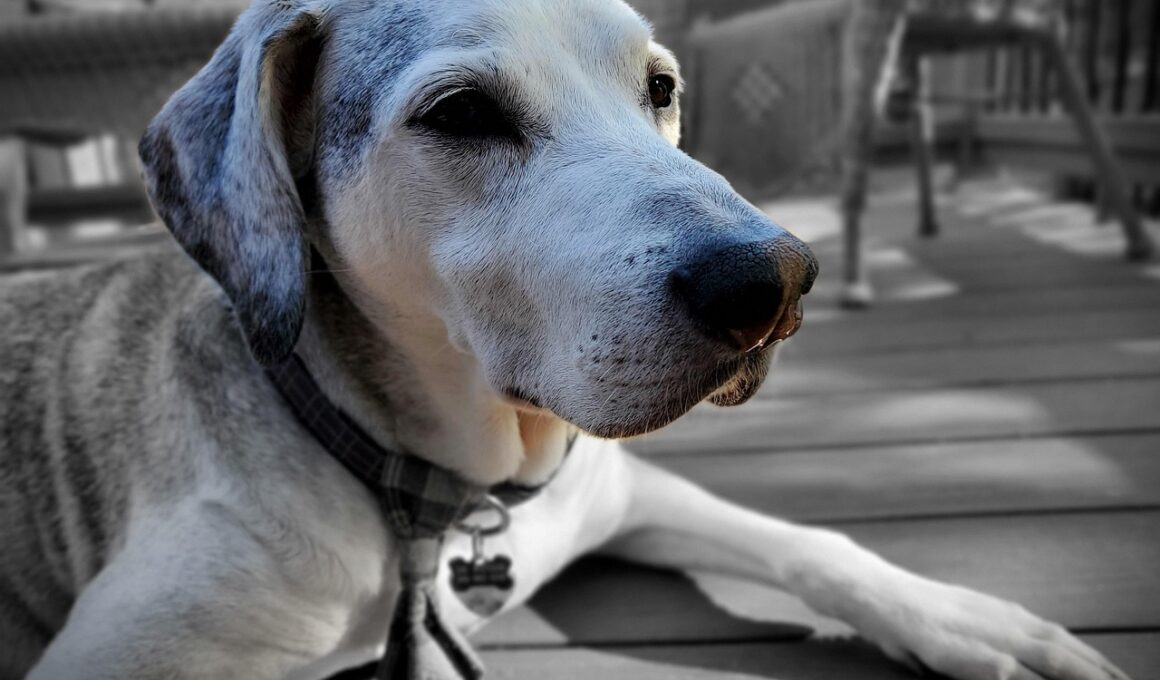Choosing Bedding to Prevent Pressure Sores in Senior Dogs
As dogs age, they become more susceptible to health issues, particularly skin conditions like pressure sores. These sores, also known as decubitus ulcers, can develop due to prolonged pressure on specific body parts, typically on thin-skinned areas such as elbows, hips, and heels. Choosing the right bedding for your senior dog is crucial in preventing these painful injuries. Begin by selecting materials with good cushioning to distribute weight evenly, reducing pressure on bony areas. Memory foam beds are an excellent choice, as they contour to your dog’s body shape, providing support and comfort. Additionally, consider beds that offer orthopedic support. Such beds are designed to assist dogs with arthritis and joint pain. Besides comfort, choose bedding that is easy to clean, as older dogs may have incontinence issues. Beds with removable, washable covers help maintain hygiene. Look also for hypoallergenic materials to avoid skin irritations. Finally, ensure the bed has a non-slip bottom, important for older dogs who may struggle with balance. All these factors contribute to improving your dog’s quality of life and reducing the risk of pressure sores.
Another important aspect of senior dog bedding is thickness. The thickness of the bed can determine how well it protects against pressure-related injuries. A thicker bed generally provides better comfort and support, especially for a heavier dog. Beds at least 4 inches thick tend to offer adequate support for senior dogs, helping to alleviate joint pain and other discomforts. Additionally, consider the firmness of the bed. A balance must be struck; while a too-soft bed may cause sinking, leading to pressure points, a too-firm mattress may not provide enough comfort. Therefore, select a bed with medium firmness that adjusts to the dog’s weight and sleeping position. It’s also essential to consider the shape of the bed. Elevated beds can be particularly beneficial since they promote airflow and reduce moisture buildup. Alternatives include traditional flat beds that sit directly on the floor. Each option has benefits that cater to individual dog preferences. Before making a final choice, assess your dog’s sleeping style. Does your dog curl up, stretch out, or tunnel? Understanding this will ensure they receive the ideal support they require.
Materials to Consider
The choice of materials used in your senior dog’s bedding can significantly affect their comfort and overall health. Look for materials that have supportive qualities while ensuring breathability. Foam is a popular choice, particularly memory foam, as it adapts to the body and provides pressure relief. Some beds may use gel-infused foam, which helps regulate temperature, keeping your dog comfortable throughout the night. Additionally, orthopedic foam is regarded as particularly beneficial for older dogs suffering from arthritis or other joint pains. Fabrics should also be taken into account; options such as cotton or fleece are often recommended for their softness and breathability. Avoid synthetic materials that may cause skin irritation or overheating. Keep in mind, however, that while softer materials are vital for comfort, durability can’t be overlooked. Look for beds with strong stitching and reinforced edges. Furthermore, consider moisture-wicking materials that help control odor and keep the bedding fresh. Investing in high-quality materials will enhance the longevity of the bed and the well-being of your senior dog.
When selecting bedding for your aging canine companion, another critical aspect is maintenance. Senior dogs can face various health challenges, leading to accidents or messes that require frequent cleaning. Therefore, opt for bedding that is easy to wash and dries quickly. Many dog beds come with removable covers that can be machine washed, which is a preferable choice for busy dog owners. Ensure that the inner material is also resistant to odors and stains. You can check customer reviews or product descriptions for information regarding maintenance requirements. Additionally, consider beds made from moisture-resistant or waterproof fabrics. This is particularly essential for senior dogs who may have incontinence issues. If your dog sleeps in an area where the bed could be subjected to moisture—like near a door or outside—choose beds that can withstand such conditions. Proper maintenance not only extends the life of the bedding but also protects your dog’s health by preventing the buildup of bacteria or allergens. A clean, fresh sleeping environment is vital for their overall well-being.
Positions and Supported Areas
Understanding how your senior dog likes to sleep is an important factor in choosing the right bedding. Dogs often have preferred sleeping positions that can guide you toward the most supportive bed. If your dog curls up, consider a bed with raised edges for security and warmth. However, if they prefer spreading out, opt for flatter beds that allow for maximum stretch. Furthermore, identify where pressure sores are most likely to develop. Dogs that lay primarily on their sides may experience pressure on their elbow joints. It can be valuable to watch your dog as they sleep and assess how often they change positions, as frequent movements can indicate discomfort. Some dogs may benefit from beds designed to support specific areas, like extra padding for joints or pressure-relief zones. Consider beds that have varied firmness levels in different areas to accommodate your dog’s unique anatomy. Ultimately, the goal is to choose a bed that encourages restful sleep while preventing painful pressure points. Understanding your dog’s habits will help you choose the ideal bedding solution.
Accessibility is also a major factor when evaluating senior dog bedding. As dogs age, they may face mobility challenges, making it difficult for them to get on or off their bed. Therefore, the height of the bed becomes critical. Select a bed that is low to the ground, enabling easier access for dogs with limited mobility or pain. Some beds on the market cater specifically to this need, being designed for easy entry and exit. If your dog struggles with getting up even from a low bed, consider dog ramps or stairs, which can make a significant difference. Additionally, non-slip surfaces are essential to prevent your dog from sliding or losing balance as they attempt to get comfortable. If the bedding shifts easily, it can pose risks during attempts to move. When choosing a suitable bed, factor in your dog’s overall physical condition and any specific needs they might have. Adequate accessibility will enhance your dog’s independence and comfort as they navigate their space.
Seeking Veterinary Guidance
Finally, it is wise to consult with your veterinarian when selecting bedding for your senior dog. Each dog has individual needs that may vary based on their health conditions, breed, and overall size. Your vet can offer tailored recommendations. Consider discussing any joint issues, skin sensitivities, or other health concerns that could impact your choice of bedding. In some cases, the vet may suggest specific brands or products known for providing optimal support for senior dogs. They may even recommend certain types of orthopedic beds, memory foam options, or other specialized products. Veterinary guidance can help ensure you make an informed decision that promotes your dog’s comfort and health. Furthermore, they may also suggest changes to your dog’s overall environment, improving their overall quality of life. This holistic approach, including bedding, can have a positive impact on their health, as a good resting area is pivotal for rest and healing. Ultimately, investing time in researching and seeking professional advice will lead to the best outcomes for your senior dog’s bedding selection.
In conclusion, selecting the right bedding for your senior dog is a crucial aspect of their care. Each factor plays a role in providing comfort, reducing pressure sores, and enhancing overall well-being. From understanding materials and maintenance to considering your dog’s sleeping habits and accessibility, the right choices can lead to significant improvements in their quality of life. Attention to detail in choosing these elements will create a sanctuary for your furry companion, ensuring they have a restful and supportive environment. Ultimately, supporting your senior dog’s needs through thoughtful bedding choices illustrates your love and commitment to their comfort. Remember, a dog’s comfort affects their mood, mobility, and happiness, making your choices essential for their care. As you explore available options, keep in mind the importance of seeking veterinary advice and adapting to your dog’s specific requirements. A proactive and informed approach will enable you to create a space that caters to their needs and promotes a snug environment. Committing to their comfort today enhances their health for tomorrow, reinforcing the bond between you and your cherished pet.





